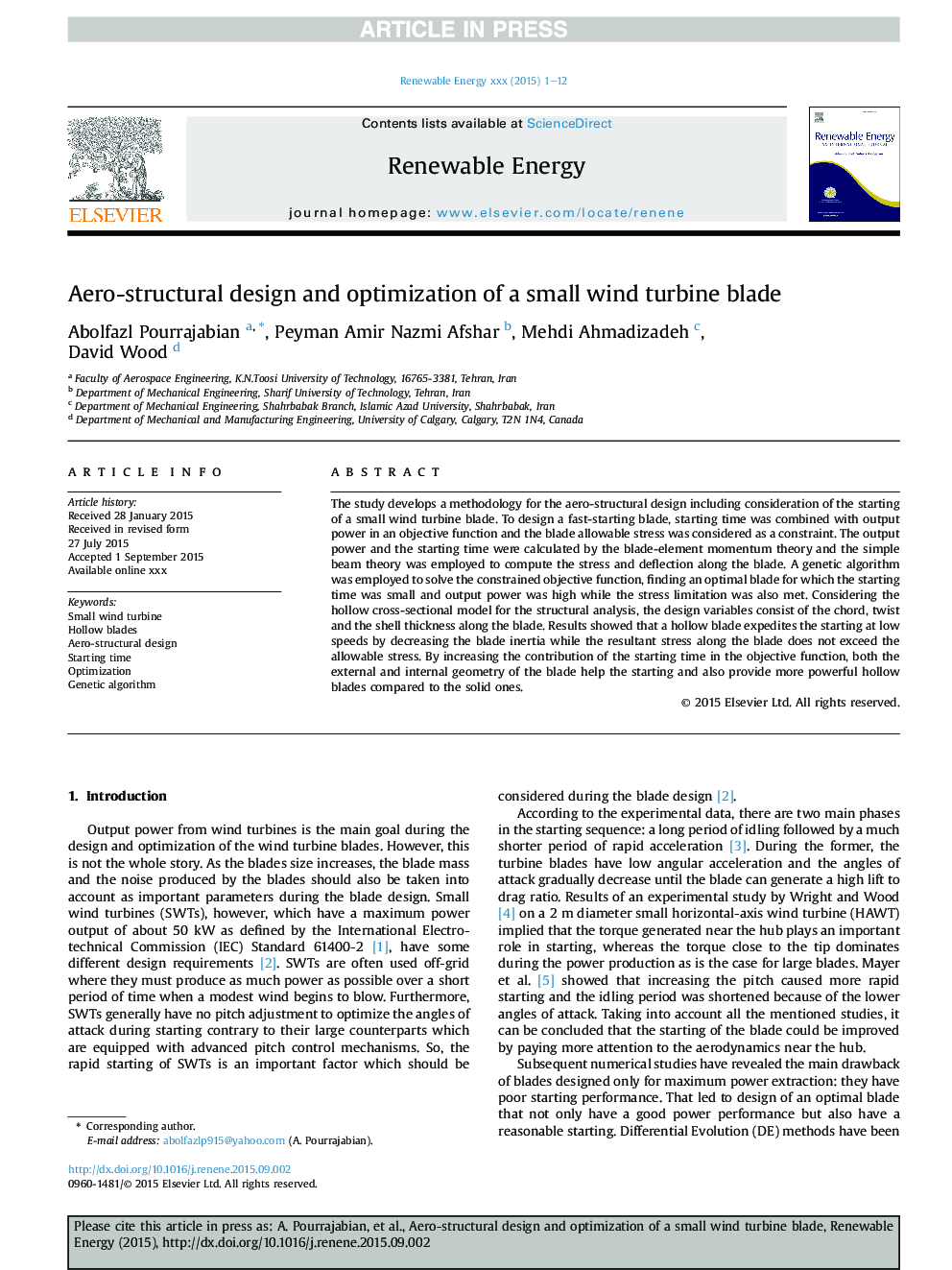| Article ID | Journal | Published Year | Pages | File Type |
|---|---|---|---|---|
| 10294028 | Renewable Energy | 2016 | 12 Pages |
Abstract
The study develops a methodology for the aero-structural design including consideration of the starting of a small wind turbine blade. To design a fast-starting blade, starting time was combined with output power in an objective function and the blade allowable stress was considered as a constraint. The output power and the starting time were calculated by the blade-element momentum theory and the simple beam theory was employed to compute the stress and deflection along the blade. A genetic algorithm was employed to solve the constrained objective function, finding an optimal blade for which the starting time was small and output power was high while the stress limitation was also met. Considering the hollow cross-sectional model for the structural analysis, the design variables consist of the chord, twist and the shell thickness along the blade. Results showed that a hollow blade expedites the starting at low speeds by decreasing the blade inertia while the resultant stress along the blade does not exceed the allowable stress. By increasing the contribution of the starting time in the objective function, both the external and internal geometry of the blade help the starting and also provide more powerful hollow blades compared to the solid ones.
Related Topics
Physical Sciences and Engineering
Energy
Renewable Energy, Sustainability and the Environment
Authors
Abolfazl Pourrajabian, Peyman Amir Nazmi Afshar, Mehdi Ahmadizadeh, David Wood,
